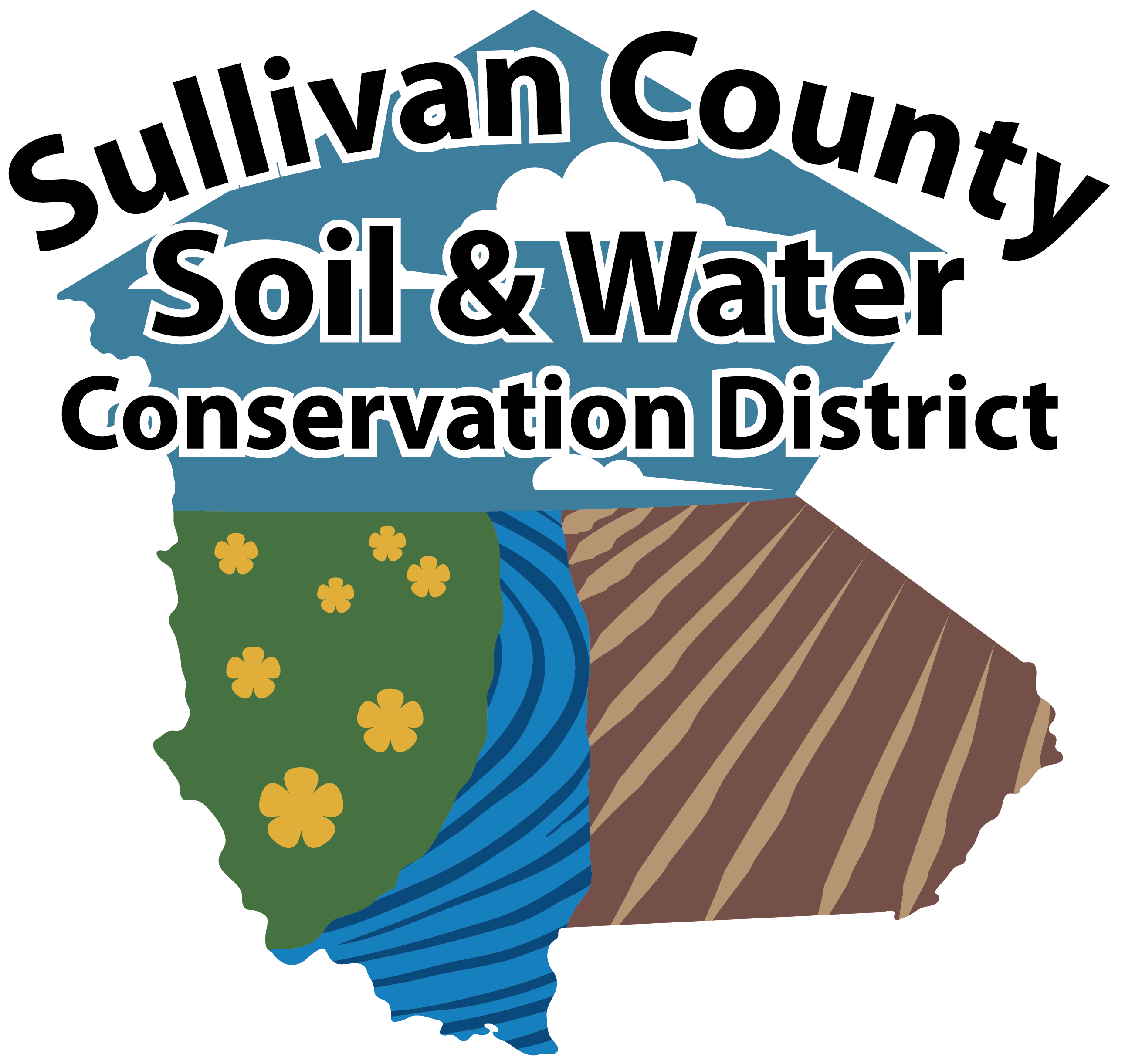Fall Fish Program
****Check back in early July, 2024 for Fall Fish Program Information****
****To place orders online, click green “SHOP” button at top right of page****
This will not work on a smartphone or tablet, online orders must be completed on a computer
2024 Fall Fish Program Order Form
NYS DEC Fish Stocking Permit Application
Grass Carp Stocking Permit Application
Fall Fish Program – Overview
If you are interested in stocking your pond with fish this Fall, the District will be accepting orders until Monday, , 2024. The pick-up day will be Saturday, , 2024. Orders can be placed online or by completing the order form and returning it to the Sullivan County Soil & Water Conservation District office at 64 Ferndale-Loomis Road, Liberty, NY 12754. Full payment must accompany each order. Checks should be made payable to: Sullivan County SWCD.
Fish Available for Purchase:
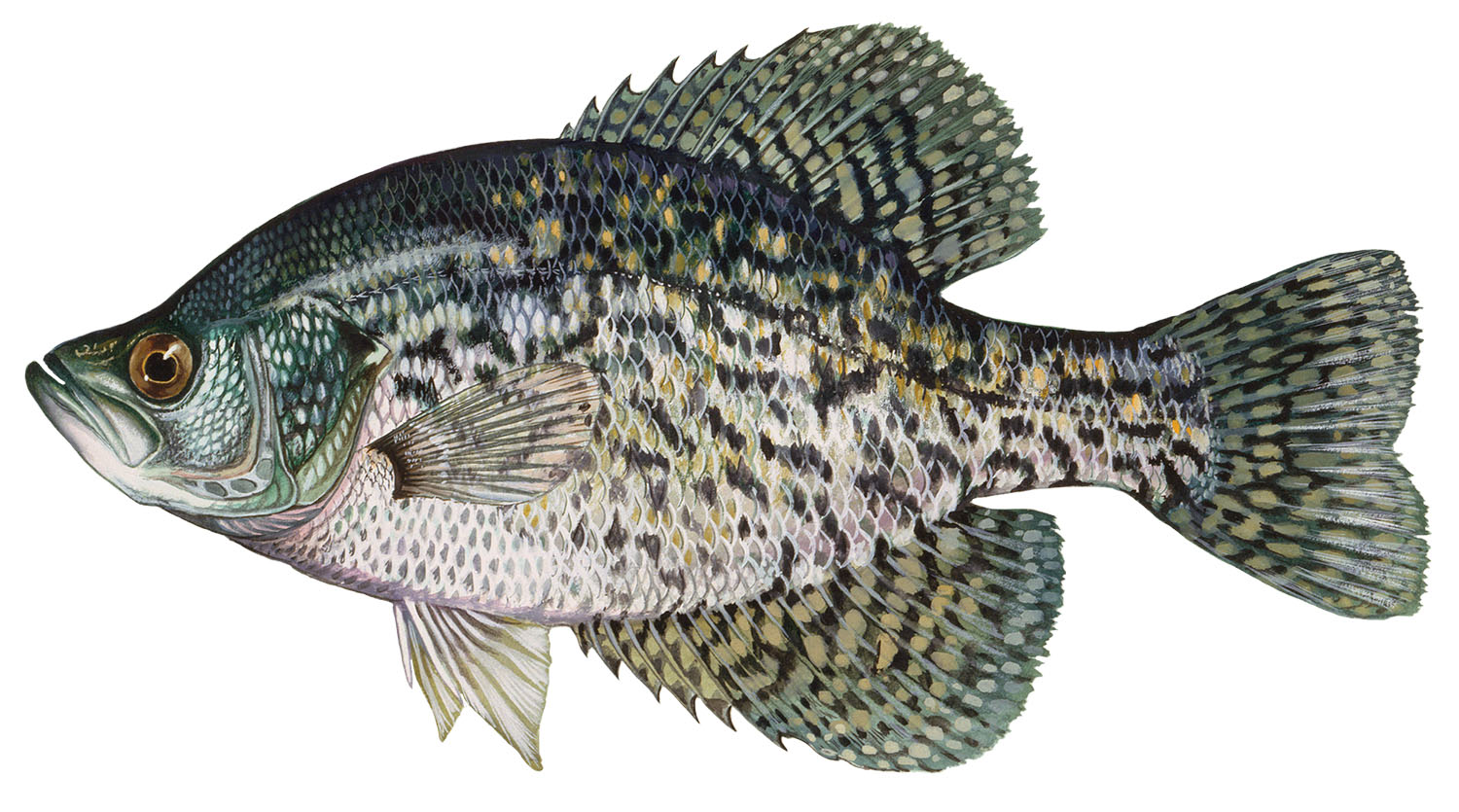 Black Crappie: The black crappie is a popular panfish throughout the US and prefers quiet, weedy waters. They will typically reach 8″ by the second year and average about a pound. Crappie readily spawn in lakes or ponds in the spring or early summer months in 1-3 feet of water, forming saucer-shaped nests near aquatic vegetation. Traveling in schools, crappie are easily caught in late spring and through the ice. Stocking recommendation: up to 200 per acre Diet: Invertebrates & other fish
Black Crappie: The black crappie is a popular panfish throughout the US and prefers quiet, weedy waters. They will typically reach 8″ by the second year and average about a pound. Crappie readily spawn in lakes or ponds in the spring or early summer months in 1-3 feet of water, forming saucer-shaped nests near aquatic vegetation. Traveling in schools, crappie are easily caught in late spring and through the ice. Stocking recommendation: up to 200 per acre Diet: Invertebrates & other fish
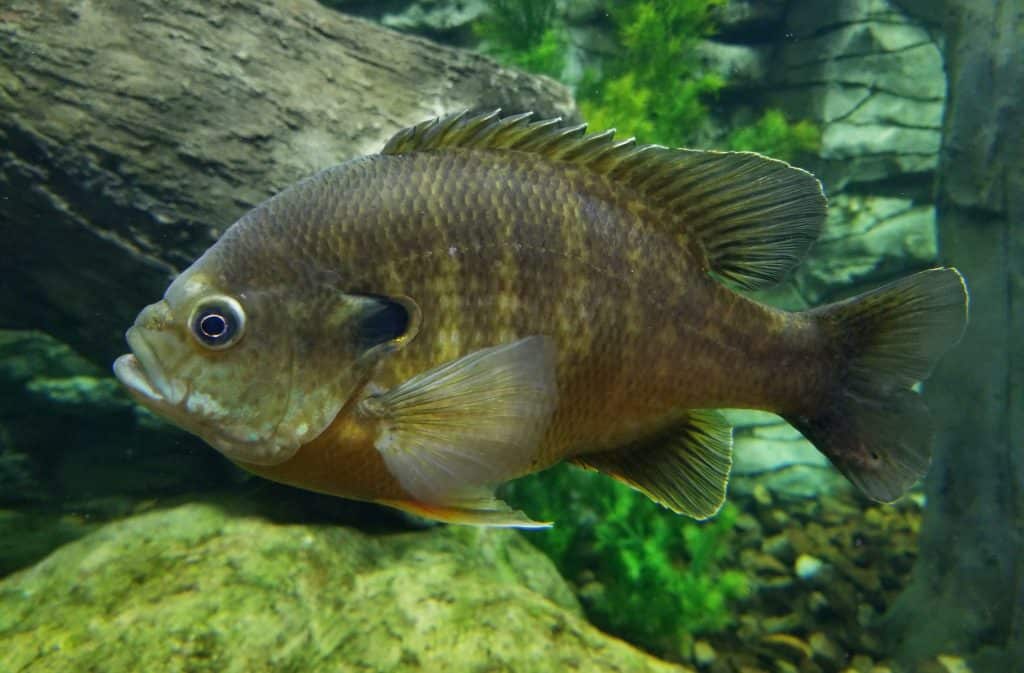 Bluegill Sunfish: The hybrid bluegill is produced by combining the male bluegill (Lepomis macrochirus) with the female green sunfish (Lepomis cyanellus). This process yields high numbers of male fish, leading to less overpopulation than with other bluegill species. The hybrid bluefill will also grow larger reaching 1.5 – 2 pounds. The hybrid’s large mouth combined with its aggressive feeding makes it easy and fun to catch. Bluegills spawn when water temperatures reach 67°F. Shallow, saucer-like nests are made and guarded by the males. Stocking recommendation: up to 300 per acre Diet: insects, invertebrates, minnows, food pellets
Bluegill Sunfish: The hybrid bluegill is produced by combining the male bluegill (Lepomis macrochirus) with the female green sunfish (Lepomis cyanellus). This process yields high numbers of male fish, leading to less overpopulation than with other bluegill species. The hybrid bluefill will also grow larger reaching 1.5 – 2 pounds. The hybrid’s large mouth combined with its aggressive feeding makes it easy and fun to catch. Bluegills spawn when water temperatures reach 67°F. Shallow, saucer-like nests are made and guarded by the males. Stocking recommendation: up to 300 per acre Diet: insects, invertebrates, minnows, food pellets
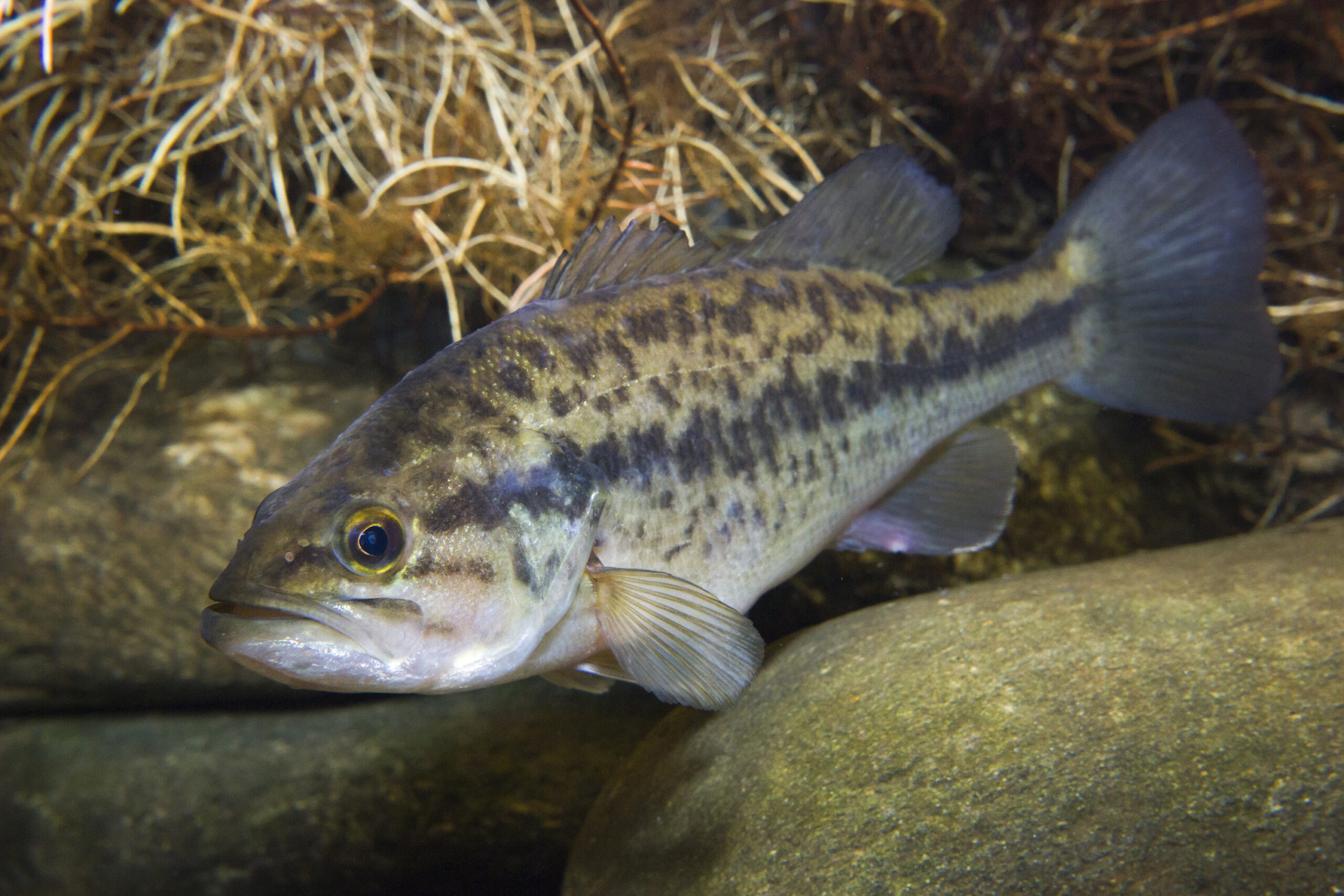 Largemouth Bass: The largemouth bass is a notable warm water sports fish providing excellent eating. Bass will reproduce in their second or third year and can potentially reach 8-10″ by the second year. In the northeast, bass grow to an average 2-4 pounds. They are voracious predators and this should be taken into consideration when added to a pond’s ecosystem. Spawning begins about mid-May when pond temperatures reach 62-65°F. The male prepares the 1-2 foot circular cleared nest area in about 2 feet of water. One or more females will deposit several thousand eggs and hatching occurs in 8-10 days. The male will guard the fry for about 2 weeks and then will feed on them. About 1 in 1000 will reach adult size in natural conditions. Stocking recommendation: up to 100 per acre Diet: insects, invertebrates, other fish, food pellets
Largemouth Bass: The largemouth bass is a notable warm water sports fish providing excellent eating. Bass will reproduce in their second or third year and can potentially reach 8-10″ by the second year. In the northeast, bass grow to an average 2-4 pounds. They are voracious predators and this should be taken into consideration when added to a pond’s ecosystem. Spawning begins about mid-May when pond temperatures reach 62-65°F. The male prepares the 1-2 foot circular cleared nest area in about 2 feet of water. One or more females will deposit several thousand eggs and hatching occurs in 8-10 days. The male will guard the fry for about 2 weeks and then will feed on them. About 1 in 1000 will reach adult size in natural conditions. Stocking recommendation: up to 100 per acre Diet: insects, invertebrates, other fish, food pellets
 Channel Catfish: The channel catfish is distinguishable from other catfish and bullheads by its forked tail and the presence of black spots on its side. They do not muddy a pond like bullheads. Channel catfish will strike bait or lures and are considered excellent eating. They average 2-5 pounds in optimal settings. Spawning will occur when the water temperature reaches 70° F, usually in crevices or burrows under banks and rocks. Typically in a pond setting, catfish need some sort of artificial breeding structure to reproduce successfully. Stocking recommendation: up to 100 per acre Diet: algae, insects, fish, and pellets
Channel Catfish: The channel catfish is distinguishable from other catfish and bullheads by its forked tail and the presence of black spots on its side. They do not muddy a pond like bullheads. Channel catfish will strike bait or lures and are considered excellent eating. They average 2-5 pounds in optimal settings. Spawning will occur when the water temperature reaches 70° F, usually in crevices or burrows under banks and rocks. Typically in a pond setting, catfish need some sort of artificial breeding structure to reproduce successfully. Stocking recommendation: up to 100 per acre Diet: algae, insects, fish, and pellets
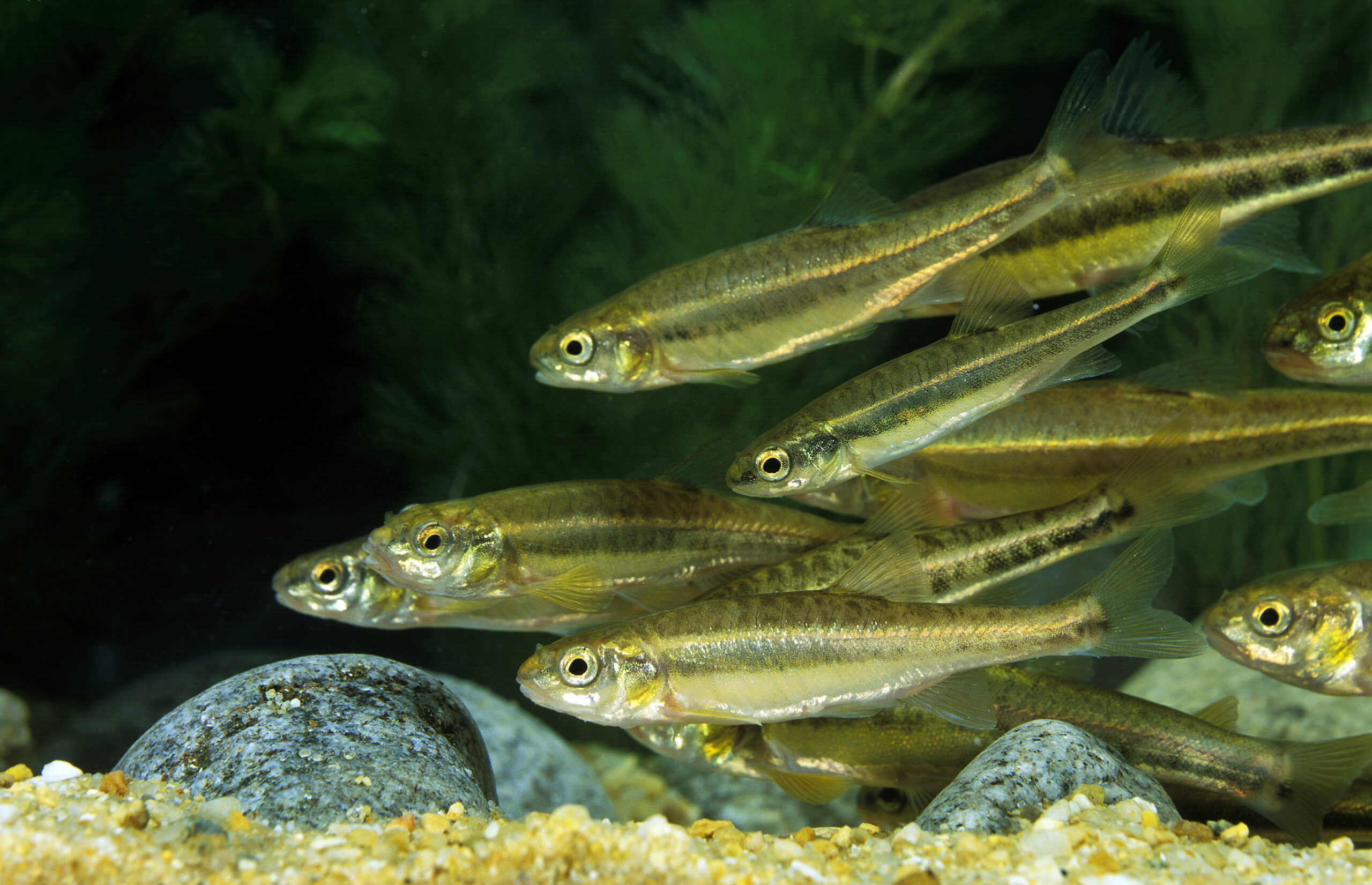 Fathead Minnow: Fathead minnows are excellent forage for game fish and a recommended component for balanced ecosystems. Fatheads are preferred over other types of shiners or chubs because they breed in a pond and do not compete with other species. They can be restocked often to ensure proper feed for game fish. These minnows average 1-3 inches in size. Spawning occurs when water temperature reaches 65°F, five or six times during the summer beginning in late May. Flat stones or boards, which can be added around the pond edge, facilitate spawning and provide cover. Stocking recommendation: up to 50lbs per acre Diet: algae, invertebrates, & food pellets
Fathead Minnow: Fathead minnows are excellent forage for game fish and a recommended component for balanced ecosystems. Fatheads are preferred over other types of shiners or chubs because they breed in a pond and do not compete with other species. They can be restocked often to ensure proper feed for game fish. These minnows average 1-3 inches in size. Spawning occurs when water temperature reaches 65°F, five or six times during the summer beginning in late May. Flat stones or boards, which can be added around the pond edge, facilitate spawning and provide cover. Stocking recommendation: up to 50lbs per acre Diet: algae, invertebrates, & food pellets
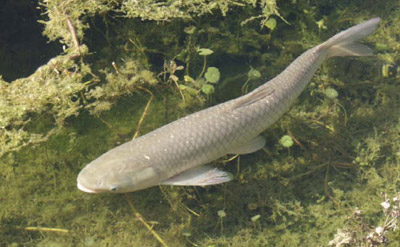 Triploid Grass Carp: The grass carp is one of the largest members of the minnow family. Native to China, grass carp were originally raised for food but are now primarily used for weed control. The grass carp is not a bottom feeder like the local carp species and do not muddy a pond. Only sterile (triploid) grass carp are allowed in our local waters and require a special stocking permit. Fish are federally inspected before being transported and sold. Plant varieties preferred by grass carp grow through the water column. Grass Carp are non-taxable. Stocking recommendation: # will be on your permit from NYSDEC Diet: pond weeds (see link below for more information)
Triploid Grass Carp: The grass carp is one of the largest members of the minnow family. Native to China, grass carp were originally raised for food but are now primarily used for weed control. The grass carp is not a bottom feeder like the local carp species and do not muddy a pond. Only sterile (triploid) grass carp are allowed in our local waters and require a special stocking permit. Fish are federally inspected before being transported and sold. Plant varieties preferred by grass carp grow through the water column. Grass Carp are non-taxable. Stocking recommendation: # will be on your permit from NYSDEC Diet: pond weeds (see link below for more information)
GRASS CARP need a separate permit that you will need to fill out and send to NYS-DEC. Anyone wanting Grass Carp should fill out the appropriate permit and mail it to the NYCDEC address listed on the permit. It will take a while to get the permit back from DEC, so you should mail the permit as soon as possible. A copy of the permit you filled out must be sent along with your order and payment. The permit from DEC must be brought with you when you come to pick up your fish.
Grass Carp Stocking Permit Application
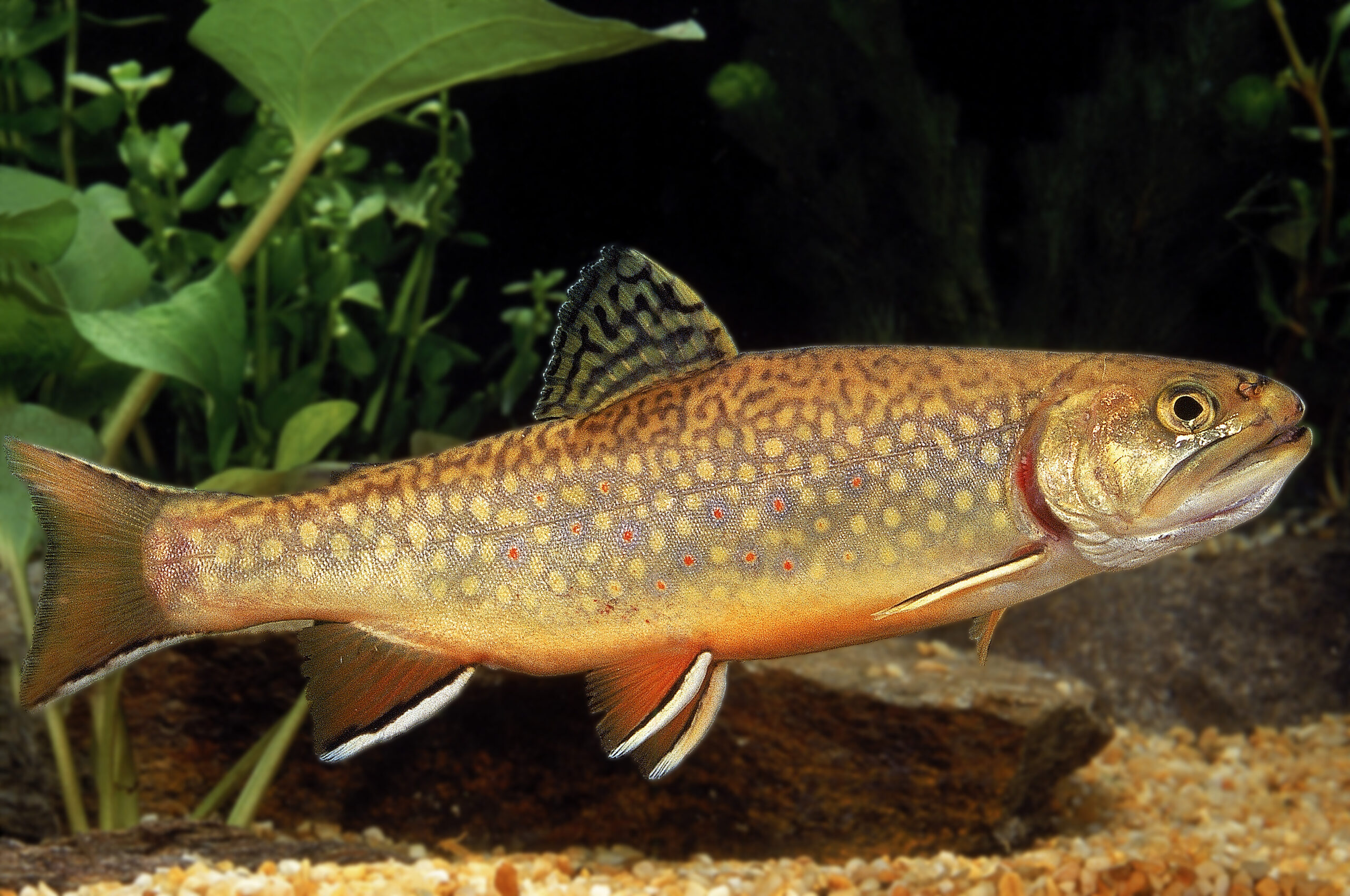 Brook Trout: Brook trout are native to the state and are New York State’s official state fish. Brook trout generally live in small-to moderate-sized streams, lakes, and spring-fed ponds, wherever cool (below 72 degrees F) water is available. They tend to prefer colder water than rainbow and brown trout, and they are often found in the headwaters of streams. They require excellent water conditions and are particularly sensitive fish. They do not breed in ponds so to provide continuous sport fishing, restocking is recommended. Stocking recommendation: up to 300 per acre Diet: insects, invertebrates, minnows, & food pellets
Brook Trout: Brook trout are native to the state and are New York State’s official state fish. Brook trout generally live in small-to moderate-sized streams, lakes, and spring-fed ponds, wherever cool (below 72 degrees F) water is available. They tend to prefer colder water than rainbow and brown trout, and they are often found in the headwaters of streams. They require excellent water conditions and are particularly sensitive fish. They do not breed in ponds so to provide continuous sport fishing, restocking is recommended. Stocking recommendation: up to 300 per acre Diet: insects, invertebrates, minnows, & food pellets
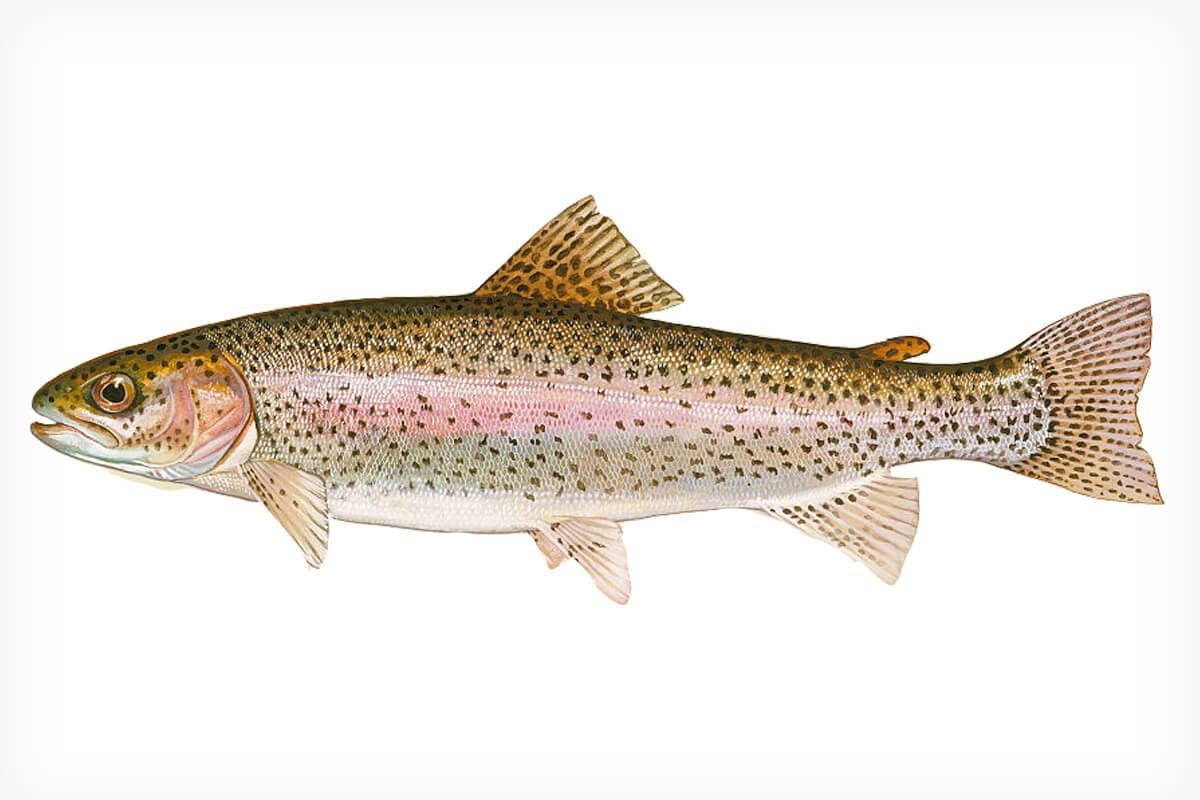 Rainbow Trout: The Kamloop, a rainbow trout strain originating in British Columbia, is known for its quicker growth rates compared to the native rainbow. Rainbow trout need water that remains relatively cold with a high oxygen content, so it is recommended they be stocked in ponds at least 10-12 feet deep with natural springs or running water. Rainbow trout fare better in a pond environment than brook or brown trout because they are able to tolerate higher temperatures and a wider pH range. In a pond these trout may grow to a maximum of 6-8 pounds reaching 10-12″ by the second year. Rainbow trout do not breed in ponds so to provide continuous sport fishing, restocking is recommended. Spring and fall are the best times to stock rainbow trout. Stocking recommendation: up to 300 per acre Diet: insects, invertebrates, minnows, & food pellets
Rainbow Trout: The Kamloop, a rainbow trout strain originating in British Columbia, is known for its quicker growth rates compared to the native rainbow. Rainbow trout need water that remains relatively cold with a high oxygen content, so it is recommended they be stocked in ponds at least 10-12 feet deep with natural springs or running water. Rainbow trout fare better in a pond environment than brook or brown trout because they are able to tolerate higher temperatures and a wider pH range. In a pond these trout may grow to a maximum of 6-8 pounds reaching 10-12″ by the second year. Rainbow trout do not breed in ponds so to provide continuous sport fishing, restocking is recommended. Spring and fall are the best times to stock rainbow trout. Stocking recommendation: up to 300 per acre Diet: insects, invertebrates, minnows, & food pellets
Trout Stocking Information:
Temperature:
Trout should be stocked in cold-water ponds. These ponds are those whose surface water temperature seldom, if ever, rises above 72° F. Survival of trout in ponds is influenced more by maximum summer water temperature than by any other factor. Although pond trout can withstand water temperatures as high as 80° F. for periods of one or two days, prolonged periods of water temperature above 74° F. will cause trout to die. For trout, it is important that bottom water in the ponds remain cool. Many ponds, fed entirely by runoff water from the surrounding watershed are excellent trout producers, although trout survival in these ponds may be poor in unusually hot summers.
How to Stock:
Avoid stocking trout in water above 68° F. Before releasing fish in the pond, check the temperature of water in the transport container and the pond water at a point 6” below the surface where fish are to be released. If the temperature difference is greater than 10° F., gradually add pond water to the container over a period of 15 minutes until the temperature difference is less than 10° F. Place the can in the pond and tip it gently to its’ side so the fish can swim out. Do not pour fish into the pond!
A pond stocked in the fall with 4” – 6” trout will contain many small but usable trout the first year. If you fish these small fish lightly, you should catch some trout weighing 1½ – 2 lbs. (15” – 16”) during the second year. Waiting another year or two for a 2 lb. trout to grow larger is not worthwhile. Trout grow slowly after they reach this size, and their death rate is high. Also, they seldom spawn in ponds. For these reasons, it is best to fish your pond hard and restock it every year or two.
Feeding Trout:
Ponds of average fertility usually produce enough natural food to support about 100 lbs. of trout per surface acre. You can increase the carrying capacity of your trout pond and get steadier trout growth by supplementing natural foods with commercially prepared ones. If commercial feed is used, don’t over feed! Feed only what the fish will clean up promptly. If any food remains 10 minutes after feeding, it probably will not be eaten. Decomposing food uses oxygen and may cause loss of fish. If the water in your pond is above 65° F., it is not safe to do supplemental feeding.
Other Products Available for Purchase:
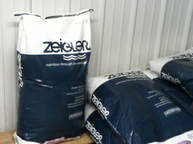 Fish Food: A 10 lb bag of Zeigler Bros. high-protein floating food for pond fish.
Fish Food: A 10 lb bag of Zeigler Bros. high-protein floating food for pond fish.
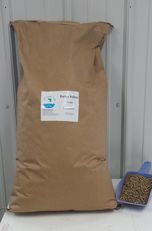 Barley Straw Pellets: The application of barley straw has received attention as a way to clarify ponds. The decomposition of barley straw bales has shown that it aids in balancing water quality. As it degrades, peroxide is created, which deters further algae growth. Barley straw pellets are natural, easy & clean to apply, and break down quickly.
Barley Straw Pellets: The application of barley straw has received attention as a way to clarify ponds. The decomposition of barley straw bales has shown that it aids in balancing water quality. As it degrades, peroxide is created, which deters further algae growth. Barley straw pellets are natural, easy & clean to apply, and break down quickly.
Fish Stocking Permit
Anyone stocking a pond with fish must apply for a Fish Stocking Permit through the NYSDEC, Bureau of Fisheries. There is no charge for the permit. The permit allows owners to plan fish management to suit them. For your convenience, attached is an Application For a Permit to Stock Fish. Complete the application and mail it to the NYS-DEC Regional Office, Bureau of Fisheries, 21 S Putt Corners Road, New Paltz, NY 12561. DEC will then send you a permit. *GRASS CARP REQUIRE A SEPARATE PERMIT*
NYS DEC Fish Stocking Permit Application
Grass Carp Stocking Permit Application
Fish Distribution – Saturday,, 2024
The District will be distributing the fish on Saturday, , 2024, in front of the pole barn behind the District office at 1:00 p.m.
Important – The fish will be bagged with oxygen and in a box so there is no need to bring a container to transport your fish.
If you have any questions, please call us at 845-292-6552, or send an email to [email protected].
